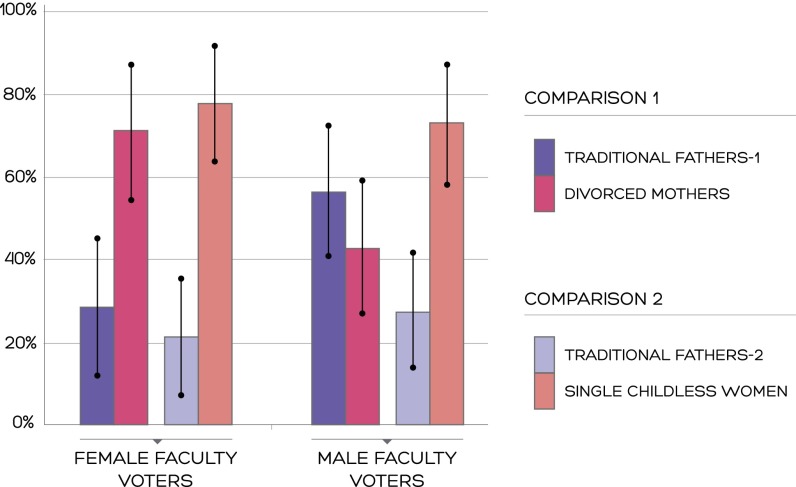Fig. 3.
Hirability of identically qualified candidates with different lifestyles: percentage of faculty members ranking the applicant number one. In a comparison between a divorced mother and an identically qualified traditional father with a stay-at-home wife (both with two preschoolers), female faculty members chose the divorced mother 71.4% of the time and the traditional father 28.6% of the time, revealing a significant preference for divorced mothers (n = 28; χ2 = 5.14; P = 0.036). In contrast, male faculty members chose the traditional father 57.1% of the time and the divorced mother 42.9% of the time (n = 35; χ2 = 0.71; P = 0.50). Male and female faculty members showed significantly different preferences for married fathers versus divorced mothers (n = 63; χ2 = 5.14; P = 0.04). In a separate condition, a comparison between single, childless women and traditional fathers showed that single, childless women are strongly preferred by both genders of faculty, independently and with both genders combined (aggregate n = 32 women and 37 men; total = 69; χ2 = 17.75; P < 0.0001).

